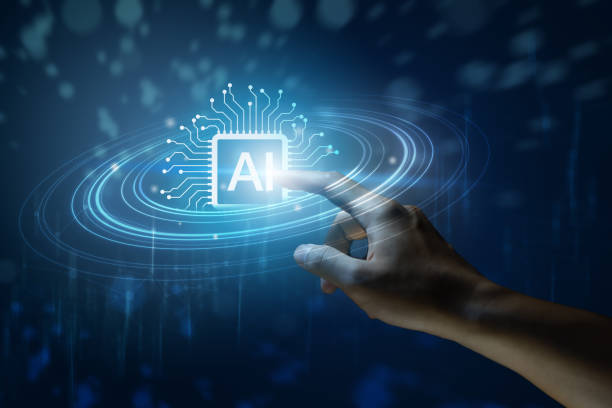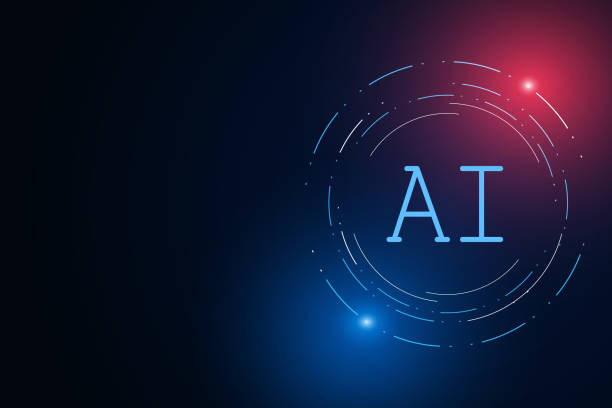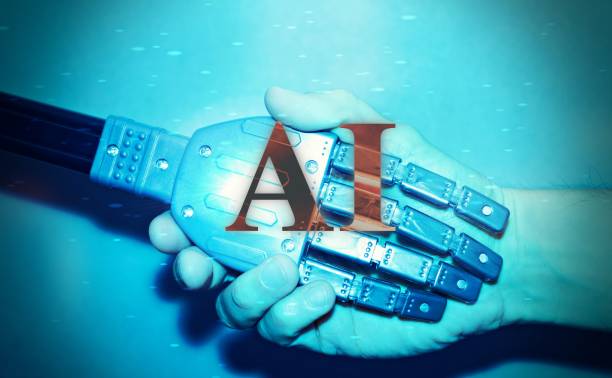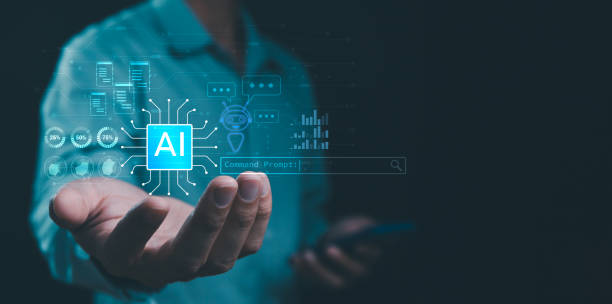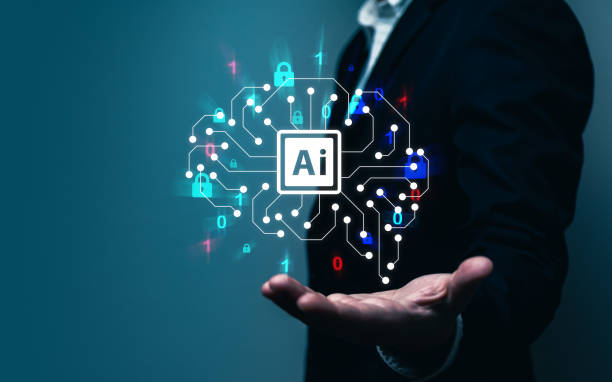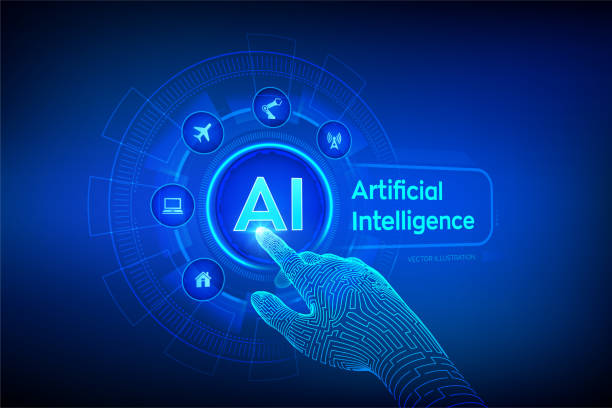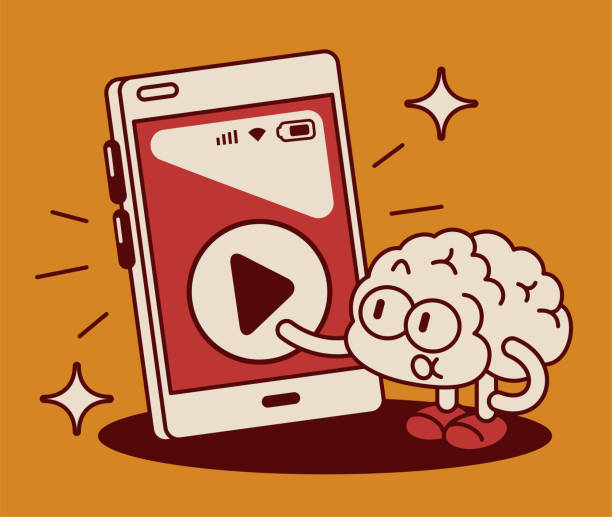What is an Artificial Intelligence Robot? A Comprehensive Definition
#Artificial Intelligence Robot is a combination of two important fields of science and technology, namely artificial intelligence [and robotics].
In simple terms, an artificial intelligence robot is a machine or software agent that uses algorithms and artificial intelligence techniques to perform tasks automatically and intelligently.
These robots are capable of receiving, processing, analyzing, and making decisions based on information, and performing the appropriate action.
The main difference between artificial intelligence robots and traditional robots lies in their ability to learn, adapt, and make independent decisions.
Traditional robots operate based on pre-programmed instructions and require re-programming when faced with new situations.
However, artificial intelligence robots, using machine learning algorithms, can learn from data, recognize patterns, and make the best decisions in various situations.
This feature enables artificial intelligence robots to perform better in complex and unpredictable environments.
In other words, an artificial intelligence robot is a complex system that uses sensors to receive information from the environment, processors to analyze data, and artificial intelligence algorithms to make decisions and act.
These robots can have various applications in different industries, including manufacturing, services, healthcare, education, and more.
Is your current online store design causing you to lose customers and sales?
Rasaweb, with its modern and user-friendly online store designs, is your solution!
✅ Significant increase in conversion rate and sales
✅ Creating strong branding and gaining customer trust
⚡ Get a free online store design consultation from Rasaweb!
Main Components of an Artificial Intelligence Robot
An artificial intelligence robot consists of various components, each of which plays an important role in its overall performance.
The most important of these components are:
- Sensors: Sensors collect the information the robot needs from its surrounding environment.
This information can include images, sounds, temperature, pressure, and other sensory data.
Sensors help the robot have a correct understanding of the environment and make decisions based on it. - Processors: Processors are responsible for processing the information received from sensors and executing artificial intelligence algorithms.
The processing power of the processor determines the speed and accuracy of the robot’s decision-making. - AI Algorithms: These algorithms are the beating heart of an artificial intelligence robot.
Machine learning algorithms, neural networks, natural language processing, and other artificial intelligence techniques enable the robot to learn from data, recognize patterns, and make intelligent decisions. - Actuators: Actuators enable the robot to act in the physical environment.
These actuators can include motors, arms, wheels, and other mechanical components that enable the robot to move, move objects, and perform physical tasks.
Click here to preview your posts with PRO themes ››
The interaction of these components enables an artificial intelligence robot to perform complex tasks automatically and intelligently.
For example, an artificial intelligence robot can use cameras and machine vision algorithms to recognize objects, interact with humans using natural language processing, and move objects using robotic arms.
Applications of Artificial Intelligence Robots in Various Industries
Artificial intelligence robots have extensive applications in various industries and are increasingly transforming them.
Some of the most important of these applications are:
- Manufacturing: Artificial intelligence robots are used in production lines to perform repetitive, dangerous, and precise tasks.
These robots can assemble parts, inspect products, and control quality with high speed and accuracy. - Services: Artificial intelligence robots are used in the service industry to provide services to customers, answer questions, and solve problems.
Chatbots, virtual assistants, and customer service robots are examples of this application. - Healthcare: Artificial intelligence robots are used in hospitals and medical centers to assist doctors and nurses, perform precise surgeries, and care for patients.
Surgical robots, pharmacy robots, and rehabilitation robots are examples of this application. - Education: Artificial intelligence robots are used in schools and universities to provide personalized education, assist students, and evaluate their performance.
Intelligent education systems and teacher robots are examples of this application. - Agriculture: Artificial intelligence robots are used in farms and orchards for planting, cultivating, and harvesting crops.
These robots can plant seeds, remove weeds, and harvest crops with high accuracy.
In addition, artificial intelligence robots also have various applications in other industries such as logistics, transportation, security, energy, and so on.
In this section, we have provided a table comparing the performance of artificial intelligence robots in the medical and educational fields:
| Feature | Medical | Education |
|---|---|---|
| Disease diagnosis | High accuracy in disease diagnosis | Providing personalized educational suggestions |
| Surgery | Performing precise and minimally invasive surgeries | Evaluating student performance |
| Patient care | Caring for patients at home and in hospitals | Providing feedback to students |
| Research | Accelerating the process of drug research and development | Analyzing educational data |
Challenges and Limitations of Artificial Intelligence Robots
Despite its many advantages, artificial intelligence robots also face challenges and limitations.
Some of these challenges include:
- High cost: Designing, building, and maintaining artificial intelligence robots can be very expensive.
- Complexity: Developing and implementing artificial intelligence algorithms is complex and requires high technical expertise and knowledge.
- Ethical concerns: The use of artificial intelligence robots can raise serious ethical concerns.
Issues such as privacy, discrimination, and job loss are among these concerns. - Technical limitations: Artificial intelligence robots still have limitations in some areas, such as natural language understanding, reasoning, and solving complex problems.
- Data dependence: The performance of artificial intelligence robots is heavily dependent on the quality and quantity of training data.
Incomplete or incorrect data can lead to incorrect decisions.
To overcome these challenges, more research and development is needed in the fields of artificial intelligence, robotics, and artificial intelligence ethics.
Also, it is necessary to develop appropriate laws and regulations for the use of artificial intelligence robots to prevent misuse of this technology.
Is your online sales not as expected? With Rasaweb, solve the problem of low sales and poor user experience forever!
✅ Increase the conversion rate of visitors to customers
✅ Create a pleasant user experience and increase customer trust
⚡ Act now to receive free consultation!
The Future of Artificial Intelligence Robots
The future of artificial intelligence robots looks very bright and promising.
With the increasing advancements in artificial intelligence and robotics, it is expected that artificial intelligence robots will play a much more important role in our lives in the near future.
- Smarter robots: With the development of new algorithms and improved hardware, artificial intelligence robots in the future will be able to perform more complex tasks and make smarter decisions.
- Humanoid robots: It is expected that humanoid robots in the future will become more like humans and be able to interact with humans more naturally.
- Wider applications: Artificial intelligence robots in the future will have wider applications in various industries and fields and will help solve problems and improve our lives.
- Human-robot collaboration: In the future, human-robot collaboration will become a reality.
Humans and robots will work together and use each other’s strengths to perform various tasks.
However, it is necessary to pay attention to the challenges and limitations of artificial intelligence robots and plan for managing its potential risks.
The Impact of Artificial Intelligence Robots on the Job Market
One of the important discussions about artificial intelligence robots is its impact on the job market.
Some experts believe that artificial intelligence robots can lead to the loss of many jobs, while others believe that this technology can create new job opportunities.
The reality is that the impact of artificial intelligence robots on the job market is complex and multifaceted.
This technology can eliminate some repetitive and routine jobs, but at the same time, it can create new job opportunities in areas such as design, development, maintenance, and management of artificial intelligence robots.
In order to be able to benefit from the advantages of artificial intelligence robots in the job market and prevent its negative effects, it is necessary to adopt appropriate policies in the field of education, skills training, and support for vulnerable workers.
Also, it is necessary to think about creating support systems for people who lose their jobs due to artificial intelligence robots.
Finally, the most important point is to look at artificial intelligence robots with a realistic and responsible view and try to use this technology optimally in the interests of society.
Artificial Intelligence Robots and Ethics: Key Considerations
The use of artificial intelligence robots raises important ethical issues that must be addressed.
Some of these issues are:
- Privacy: Artificial intelligence robots can collect and process large amounts of personal information.
This information can be misused and violate people’s privacy. - Discrimination: Artificial intelligence algorithms may be unintentionally discriminatory and behave unfairly towards specific groups of people.
- Accountability: In the event of an error or damage caused by an artificial intelligence robot, it is difficult to determine responsibility.
Who is responsible? The robot designer? The manufacturer? The user? - Security: Artificial intelligence robots can be cyberattacked and used for malicious purposes.
To solve these ethical issues, it is necessary to develop appropriate laws and regulations, create ethical standards, and train experts and users in the field of artificial intelligence ethics.
Also, it is necessary to continuously evaluate the ethical impacts of artificial intelligence robots and take action to reduce its potential risks.
| Ethical Issue | Description | Solutions |
|---|---|---|
| Privacy | Collection and processing of personal information | Developing laws and regulations |
| Discrimination | Unfair treatment of specific groups | Developing fairer algorithms |
| Accountability | Determining responsibility in case of errors | Creating legal frameworks |
| Security | Cyberattacks and misuse | Strengthening cybersecurity |
How to Build an Artificial Intelligence Robot
Building an artificial intelligence robot is a complex and challenging project that requires knowledge and skills in various fields such as artificial intelligence, robotics, programming, and electronics.
However, using existing tools and resources, it is possible to build a simple artificial intelligence robot.
The main steps in building an artificial intelligence robot are:
- Define the goal: First, you must specify the goal of building the robot.
What is your robot supposed to do? - Choose hardware: Then you need to choose the hardware you need.
This hardware can include a microcontroller, sensors, actuators, and other electronic components. - Choose software: You need to choose the appropriate software to program your robot.
Programming languages such as Python, C++, and Java are good options. - Collect data: To train artificial intelligence algorithms, you need to collect data.
This data can include images, sounds, texts, and other sensory data. - Train the algorithm: Using the collected data, you must train your artificial intelligence algorithms.
This can be done using machine learning libraries such as TensorFlow and PyTorch. - Implement the algorithm: After training the algorithm, you need to implement it on your robot.
This can be done using the microcontroller and programming software. - Test and improve: After implementing the algorithm, you need to test your robot and improve its performance.
If you are looking to build a more complex artificial intelligence robot, you can use online resources, training courses, and open-source projects.
Did you know that your company’s website is the first point of contact for 75% of potential customers?
Your website is the face of your brand. With Rasaweb’s corporate website design services, create an online presence that earns customer trust.
✅ Create a professional and lasting image of your brand
✅ Attract target customers and increase online credibility
⚡ Get free advice from Rasaweb experts!
Resources for Learning Artificial Intelligence Robotics
If you are interested in learning about artificial intelligence robots, there are many resources to get started.
Some of these resources include:
- Online courses: Websites such as Coursera, edX, and Udacity offer numerous online courses in the field of artificial intelligence and robotics.
- Books: There are many books on artificial intelligence and robotics that you can use to learn the concepts and techniques of these fields.
- Scientific articles: Scientific articles published in reputable journals and conferences can be a valuable source for learning the latest advances in the field of artificial intelligence and robotics.
- Open-source projects: Participating in open-source projects can be a great way to learn practical artificial intelligence robotics.
- Online forums and groups: Joining online forums and groups can help you connect with other artificial intelligence and robotics enthusiasts and learn from their experiences.
To start learning about artificial intelligence robots, you can familiarize yourself with the basic concepts of artificial intelligence, machine learning, and robotics.
Then you can go on to learn programming languages such as Python and C++.
After that, you can start building simple projects using the existing tools and libraries and gradually increase your skills.
Summary and Conclusion of Artificial Intelligence Robots
Artificial intelligence robots is a powerful and transformative technology that can have widespread applications in various industries and fields.
By combining artificial intelligence and robotics, this technology is capable of performing complex tasks automatically and intelligently and helping to solve problems and improve our lives.
However, the use of artificial intelligence robots also has challenges and limitations that must be addressed.
Ethical issues, impact on the job market, and security are among these challenges.
In order to be able to benefit from the advantages of artificial intelligence robots and prevent its negative effects, it is necessary to adopt appropriate policies in the field of education, skills training, ethics, and security.
Finally, the most important point is to look at artificial intelligence robots with a realistic and responsible view and try to use this technology optimally in the interests of society.
This technology has advanced so much that you can at any time use artificial intelligence robots to correctly direct your path towards improving your life and high efficiency.
Frequently Asked Questions
| Row | Question | Answer |
|---|---|---|
| 1 | What is an artificial intelligence robot? | An artificial intelligence robot is a machine that is capable of understanding, reasoning, learning, and problem-solving and can perform complex tasks with relative autonomy. |
| 2 | What are the most important applications of artificial intelligence robots? | The main applications include industrial production, customer service (chatbots), medicine and surgery, self-driving transportation, space exploration, and military affairs. |
| 3 | What is the main difference between an artificial intelligence robot and a regular robot? | A regular robot only follows programmed instructions, while an artificial intelligence robot can learn from data, make decisions, and adapt to new environments. |
| 4 | How do artificial intelligence robots learn? | They identify patterns and improve their performance through machine learning algorithms (such as deep learning, reinforcement learning) and processing vast amounts of data. |
| 5 | Can artificial intelligence robots have emotions? | Currently, artificial intelligence robots do not have real emotions in the human sense. They can mimic or recognize emotions, but they do not understand or experience them. |
| 6 | What are the current limitations of artificial intelligence robots? | Limitations include the need for large amounts of data, the inability to understand abstract concepts, the lack of true creativity, ethical issues, and the challenges of generalizability in new environments. |
| 7 | What is the role of artificial intelligence in the development of Humanoid robots? | Artificial intelligence helps humanoid robots walk, maintain balance, understand their surroundings, interact with humans, and perform complex tasks. |
| 8 | How is the future of artificial intelligence robots predicted? | It is predicted that artificial intelligence robots will become smarter, more autonomous, and able to perform more complex tasks in everyday life and industry, and their interaction with humans will increase. |
| 9 | Can artificial intelligence robots replace all human jobs? | It is unlikely that all human jobs will be replaced. Robots take over many repetitive and dangerous tasks, but jobs that require creativity, empathy, and ethical judgment will remain. |
| 10 | What ethical and social challenges arise with the expansion of artificial intelligence robots? | Challenges include issues related to privacy, data security, ethical decision-making by robots, impact on employment, and accountability in case of errors. |
And other services of Rasa Web Advertising Agency in the field of advertising
Intelligent Sales Automation: Professional optimization for online growth using user experience customization.
Intelligent Social Media: A professional solution to increase sales with a focus on intelligent data analysis.
Intelligent Content Strategy: Designed for businesses looking to grow online by designing attractive user interfaces.
Intelligent Marketing Automation: A quick and efficient solution for digital branding with a focus on SEO-driven content strategy.
Intelligent SEO: A quick and efficient solution to increase site visits with a focus on designing attractive user interfaces.
And more than hundreds of other services in the field of internet advertising, advertising consulting and organizational solutions
Internet Advertising | Advertising Strategy | Reportage Ad
Resources
What areas can smart robots be used in?
,Introduction to artificial intelligence robots
,How are artificial intelligence robots changing the world?
,What is AI artificial intelligence?
? For a powerful and lasting presence in the digital space, Rasaweb Digital Marketing Agency offers innovative solutions including fast website design and professional, your business is always with you.
📍 Tehran, Mirdamad Street, next to the Central Bank, Kazerun Jonobi Alley, Ramin Alley No. 6
“`



